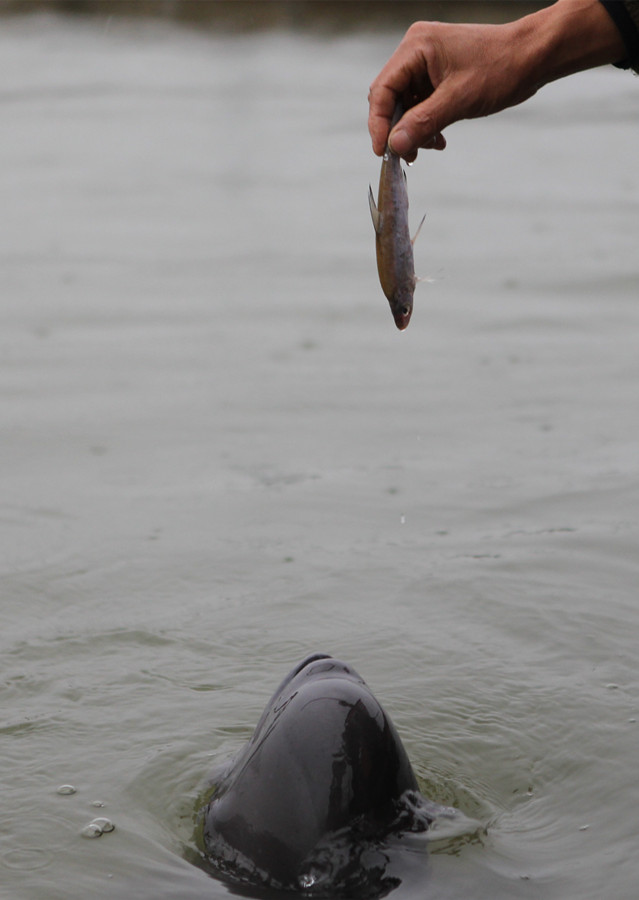
Newsroom
Yangtze Finless Porpoise Facing Extinction
 |
| Ding Zeliang, a 46-year-old finless porpoise keeper, feeds fish to a finless porpoise at the Tian'ezhou Baiqi Dolphin Nature Reserve in Shishou city, central China's Hubei Province on November 11, 2013. [Photo: CRIENGLISH.com/Xing Yihang] |
The Tian'ezhou Baiqi Dolphin Nature Reserve is the only off-site conservation reserve for finless porpoises in China and the world. Thirty-nine finless porpoises are currently living in the reserve.
Ding Zeliang, a 46 year-old keeper for two finless porpoises at the reserve, whistles to call the animals to supper.
"They are very nice and kind animals. I think there is a kind of special bond between us. I treat them like son and daughter and come here to feed them everyday even if it is windy or rainy."
As the only freshwater sub-species of the whole porpoise family, the finless porpoise sits at the top of the food chain in the Yangtze River.
Zhang Zhenhua, the vice director of the management office at Tian'ezhou Baiqi Dolphin Nature Reserve, explains why protecting this animal is so important.
"To protect the finless porpoise is to protect ourselves. The animal is at the top of the pyramid in the Yangtze River ecosystem. The absence of the finless porpoise from the river would indicate the decay of the ecosystem. The Yangtze River is our mother river and our lives depend upon it. It also indicates industrial and agricultural pollution has made the creatures disappear in the river and it will finally become a stagnant pool."
Zhang says there were around 2,000 finless porpoises in China in 2006, but scientific research revealed there were only 1,000 left in China in 2012.
In addition to the pollution from human industrial and agricultural activities, Zhang says the lack of food is another reason behind the significant decline in the finless porpoise population.
"Fish is the main food for the finless porpoise, and there has not been enough fish recently. Humans leave a lot of leftovers in the water around the dock area, which attracts a lot of fish who go there to feed. Finless porpoises are willing to risk injury and even death to catch the fish at such places where they have never gone before."
Zhang adds that the extreme weather is another threat for the rare animal.
In February and March 2008, unexpected freezing weather froze the water in the Tian'ezhou reserve. The porpoise broke the icy surface as they sought air and cut themselves on the sharp ice in the process. Five finless porpoises including two pregnant ones were killed under the extreme weather conditions.
Another example is the serious drought which occurred in the middle and lower reaches of the Yangtze River in May 2011. Many lakes became grasslands with no fish during the finless porpoise's breeding season.
Tao Le is an employee at the management office of the Tian'ezhou reserve. His working responsibility is to promote the idea of environmental protection to the public. He says he is afraid that the rare animals will only exist in his memories in the future.
"When I was a child, I used to hear from the seniors that the finless porpoise could catch up with the ship, because the ship's engine generated waves which bring up some small fish with it. It indicates the ecosystem in the Yangtze River was very good and the number of finless porpoises was large at that time, while now that scenery can never be seen."
Finless porpoises carry a natural smile on their faces. And they are very friendly to humans. The road to protecting the finless porpoise will be long and hard. (CRI English)